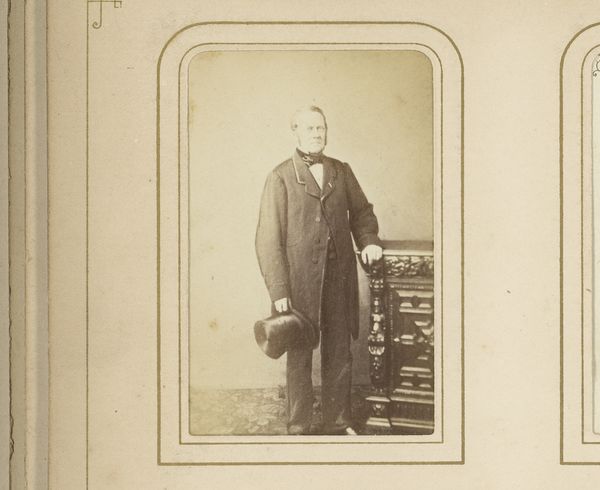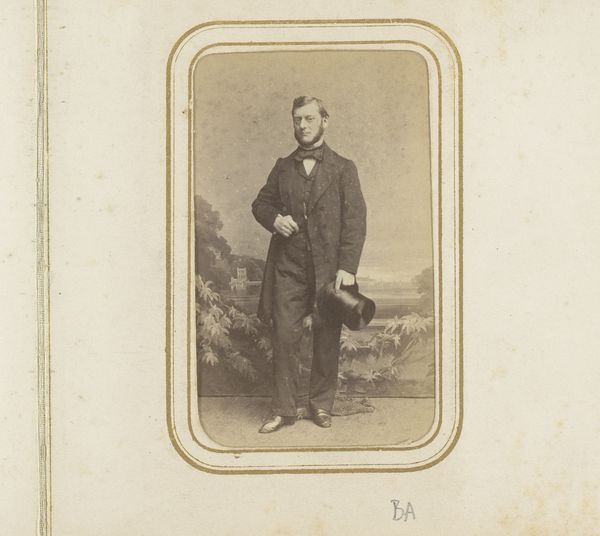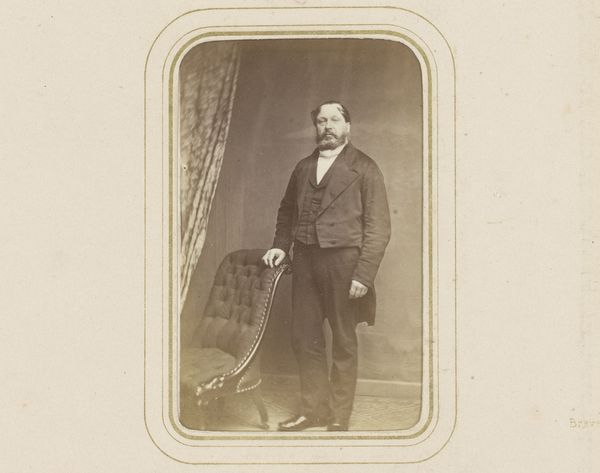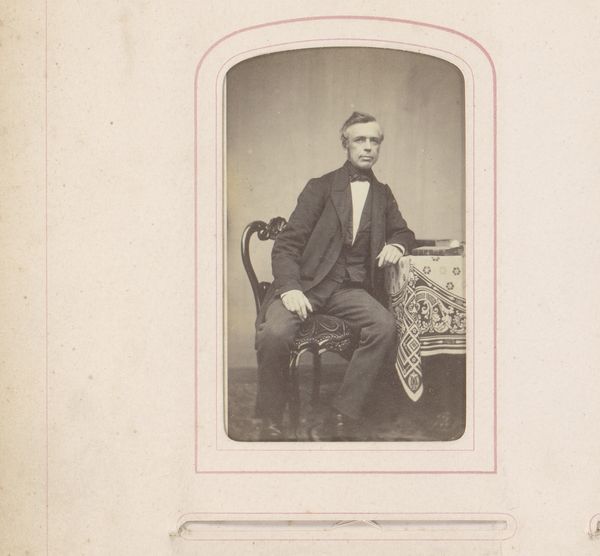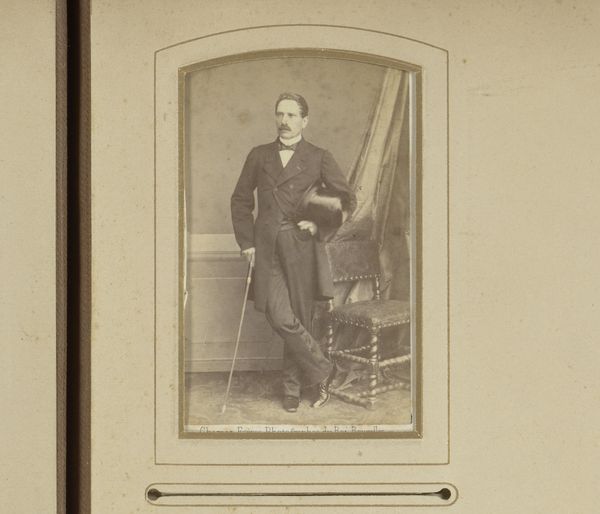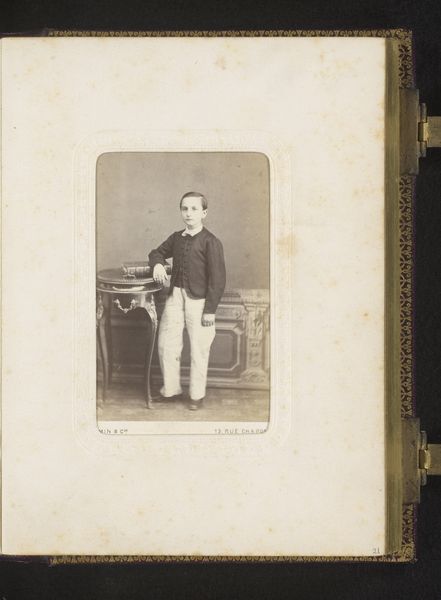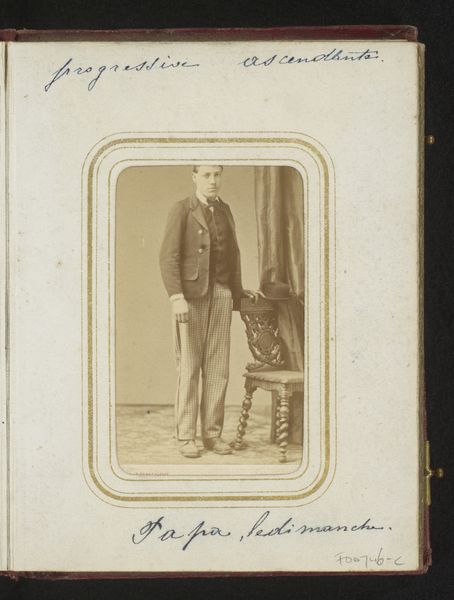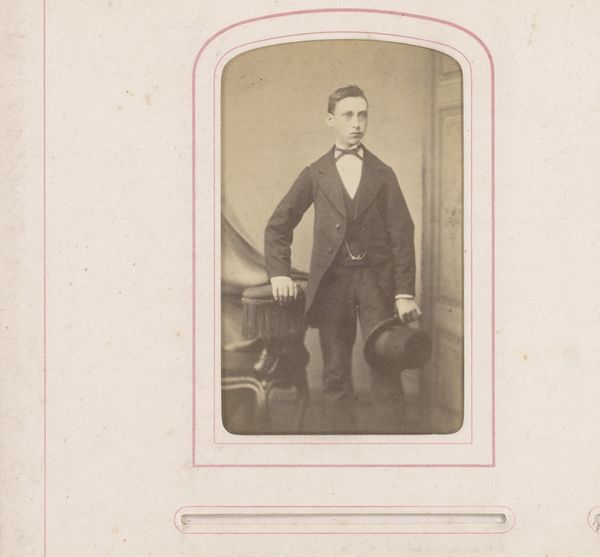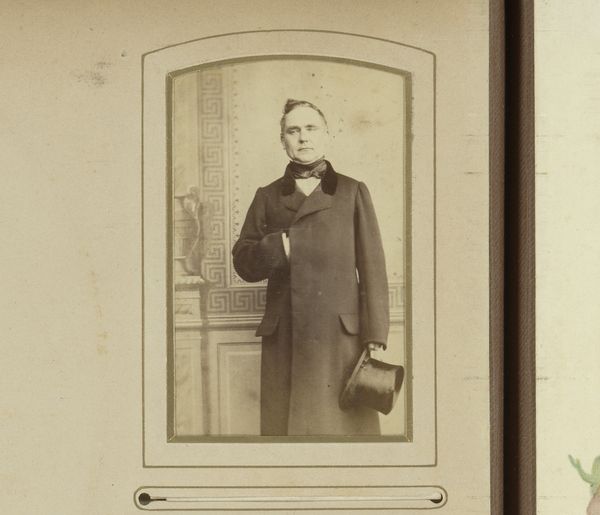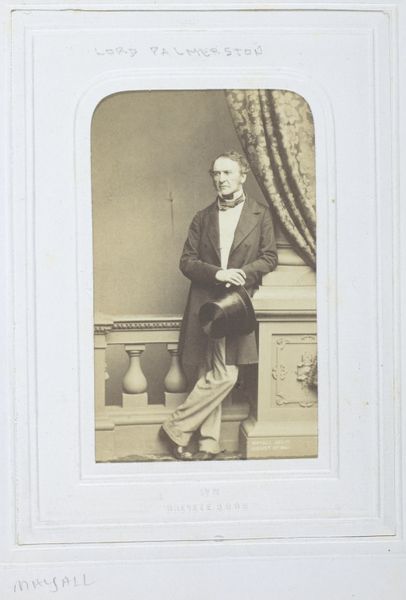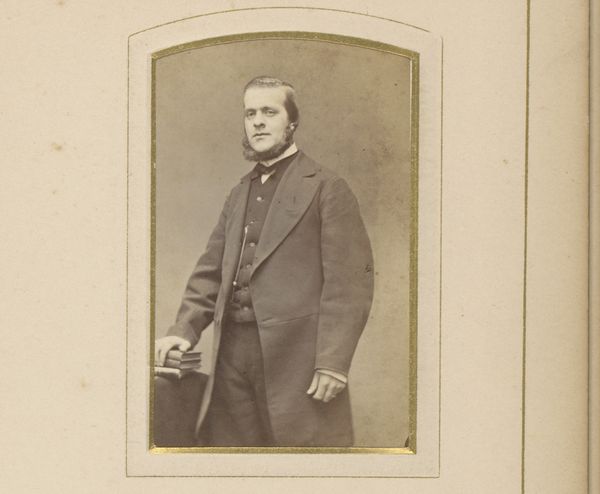
photography, gelatin-silver-print
#
portrait
#
photography
#
historical photography
#
historical fashion
#
unrealistic statue
#
gelatin-silver-print
#
19th century
#
academic-art
Dimensions: height 82 mm, width 52 mm
Copyright: Rijks Museum: Open Domain
Editor: This is “Portret van een man, staand bij en stoel,” by Pierre Eug\u00e8ne Thiebault, created sometime between 1852 and 1870 using the gelatin-silver print technique. The portrait's formality makes me wonder about the subject’s status and what was involved in the making of such portraits back then. What do you see in this piece? Curator: I see a convergence of industrialization and portraiture. Notice the materiality of the print, the gelatin-silver process allowing for reproducible images. It democratized portraiture, moving it from the exclusive realm of painting to a more accessible form. Consider the labor involved: the photographer, the sitter, the technicians preparing the chemicals and printing. Editor: So, you're saying it’s not just about the man in the portrait, but also about the system that created it? Curator: Precisely. This image signifies a shift in production. How did this new technology affect the traditional role of portrait painters and their studios? What social structures were being reinforced or challenged by the accessibility of photographic portraits? Note his clothing too. Editor: His tailored suit speaks of a certain class. So the clothing represents a new form of consumerism. It makes me think, what messages were people of this period trying to send through such a medium? Curator: Exactly. It prompts questions about the exchange of value—not only artistic value but also social value, as determined through materials and access. Does this portrait function as a status symbol readily available for display and consumption? The ability to reproduce the image impacts not only art itself but the culture it is produced within. Editor: It's fascinating to think about photography in this context, less about art, more about material processes and consumer habits, democratisation, the way this art challenges class barriers in the process, but reinforces it through consumerism. Thanks, it puts it all in a fresh light! Curator: Indeed, it is always helpful to re-evaluate older works under changing technological, social, and political conditions.
Comments
No comments
Be the first to comment and join the conversation on the ultimate creative platform.

